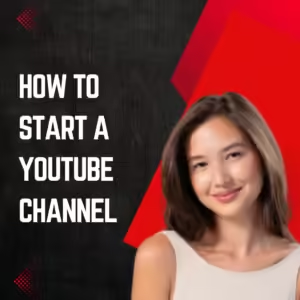YouTube Hashtags — The Ultimate Guide to Create Amazing Content
Table of Contents
ToggleYouTube hashtags are more than just a tool for content creators—they are your ticket to reaching a wider audience and expanding your channel’s presence. Think of them as the breadcrumbs that guide viewers to your videos, making them easier to discover and engage with. When used the right way, YouTube hashtags can increase your video visibility, skyrocket your view counts, and help build a dedicated fan base.
Imagine you’ve spent hours creating amazing content, but if no one sees it, all that effort can go unnoticed. That’s where hashtags come in! By strategically incorporating relevant hashtags into your video’s title or description, you’re essentially giving YouTube’s algorithm a roadmap to understand what your content is about. This boosts the chances of your video showing up in search results and recommended feeds, drawing in viewers who are interested in exactly what you’re offering.
But here’s the key—using hashtags isn’t just about throwing random words into your description. It’s about being intentional.
So, this guide provides comprehensive information about everything you should understand about YouTube hashtag features.
What Are YouTube Hashtags?
Internet users find content organization on YouTube through hashtags, which act as keywords prefixed with the “#” symbol. These terms let audience members locate videos that address specific interests. Video hashtags either display above the video title or appear inside the video description. A YouTube hashtag allows users to see videos that have used the matching tag when they click on its display.
Why Use YouTube Hashtags?
Think of your hashtags as a way to tap into trending conversations, niche communities, or specific interests. If you have to start a YouTube channel on cooking tutorial, use hashtags like #CookingTips, #RecipeIdeas, or #FoodLovers or if you provide stock market knowledge then you can use hashtags like #beststockmarketchannel. This helps your video get discovered by people who are searching for content in those areas.
And it’s not just about increasing your video views—it’s about engagement too. When viewers can easily find your videos, they’re more likely to leave likes, comments, and shares. All of this interaction signals to YouTube that your content is valuable, and that, in turn, can help it reach even more people.
So, if you’re ready to elevate your YouTube game, mastering hashtags is a must. This is simple yet powerful tool could be the difference between your content being hidden in the vast sea of videos and standing out as a must-watch piece of media. Start experimenting with a few hashtags, track your results, and watch as your community grows!
Increased Visibility
Your content becomes discoverable through YouTube hashtags since they make your videos visible within target topic searches, which drives additional views. Your content can reach more users effectively through their proper implementation.
Improved Discoverability
Users locate relevant videos whenever they search hashtags on YouTube. Your content reaches more viewers because you choose trending or niche-related hashtags for your YouTube video.
Boost Engagement
Videos that use relevant and trending hashtags tend to receive more engagement, including likes, comments, and shares. This helps increase the video’s ranking in YouTube search results.
Hashtags for YouTube Shorts
Short-form videos on YouTube, known as YouTube Shorts, also benefit from hashtags. Including hashtags like “#shorts” ensures that your content gets included in YouTube’s Shorts feed, helping you reach a wider audience.
How to Find the Best YouTube Hashtags for Your Videos
Finding the right YouTube hashtags can make or break your video’s performance. Here are some strategies to help you discover the best ones:
Analyze Trending Hashtags
Look at the trending hashtags on YouTube related to your niche. Use tools like Google Trends or YouTube’s search bar to see which hashtags are currently popular and relevant to your content.
Use Relevant Keywords
Think about the keywords that best describe your video. Use those keywords as hashtags. For example, if you are creating a tutorial about cooking, you might use hashtags like “#cooking,” “#recipe,” or “#cooking tips.”
Explore Competitor Videos
Check out similar videos in your niche and note the hashtags they use. This can give you an idea of what works and what doesn’t in your specific genre.
Utilize YouTube’s Auto-Complete Feature
When you type in a search term in the YouTube search bar, YouTube will suggest popular searches. These can serve as inspiration for hashtags that people are already searching for.
Use YouTube Hashtag Tools
Tools like TubeBuddy, VidIQ, and Hashtagify can help you find the best YouTube hashtags for views. These tools provide data on the popularity and performance of specific hashtags.
How to Add Hashtags to YouTube Videos
Hashtag addition to YouTube videos remains straightforward. Here’s how to do it:
1. Add Hashtags in the Title
YouTube lets users add up to three relevant hashtags when creating their video titles. Similar to the content, choose relevant hashtags that should avoid overwhelming the video title.
2. Add Hashtags in the Description
Use hashtags by placing them as part of your video description content. When adding hashtags to YouTube you can use multiple tags yet normalize your approach by using relevant keywords instead of flooding with non-matching terms to sustain professional quality.
3. Use Hashtags in Comments
You should prompt viewers to include prepared hashtags when they comment, they do not let you add hashtags as comments themselves.
4. Hashtag Placement Guidelines
YouTube videos permit a total of 15 possible hashtags for each posting. Severe violations of this hashtag quantity will force YouTube to stop recognizing any hashtags you add. Add only 5–10 tags directly related to your video content for best effect.
Best Practices to Add Hashtags on YouTube
1. Keep Hashtags Relevant
Insert only hashtags directly connected to your video subject when they appear. Using inappropriate hashtags leads to viewer confusion which reduces your online credibility.
2. Use Trending Hashtags
You should research YouTube hashtags that are currently popular in your niche field. When your video uses appropriate hashtags viewers will discover it more rapidly which leads to increased reach among audiences.
3. Don’t Overstuff Hashtags
Too many hashtags create a spammy appearance within the content. In order to keep your video description organized choose only the most essential hashtags.
4. Be Specific
Your target viewers will find your content through relevant hashtags that mirror the specific themes of your material. Prime your cooking hashtags because #cooking feels outdated so utilize #easycookingrecipes or #bakingtutorials.
5. Combine Popular and Niche Hashtags
Attaining broad visibility and reaching targeted audiences becomes possible when you use trending high-volume tags combined with more specialized niche hashtags.
6. Avoid Generic Hashtags
Using generic hashtags that include “#video” or “# YouTube” provides no worthwhile benefit to campaign performance. When creating your video’s hashtags, steer toward those that match both your content and your audience base.
Conclusion
Using YouTube hashtags enables users to enhance both viewer identification and interaction with their YouTube video content and discoverability. Your likelihood of appearing in YouTube search results and recommendations increases when you select appropriate hashtags that are currently popular. Your video benefits from hash tags that remain short and apply directly to your content, but specifically target its main characteristics.



